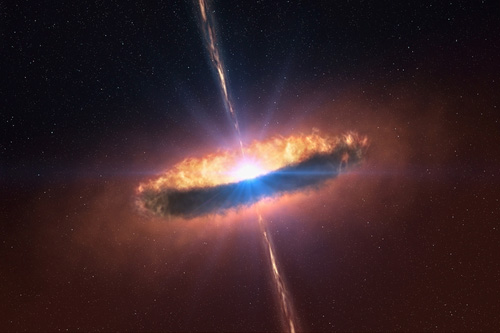The birth and life cycle of a star is a complex and fascinating process, one that has captivated the attention of scientists and laypeople alike for centuries. From the swirling clouds of gas and dust that give rise to new stars, to the bright, glowing orbs that lights up the night sky, the life of a star is full of wonder and mystery.
The birth of a star begins with a giant cloud of gas and dust known as a nebula. These nebulae are found throughout the universe, and are the birthplace of many of the stars we see today. The nebula is composed of hydrogen, helium, and other elements, and is held together by its own gravity.
As the nebula collapses under its own weight, it begins to spin faster and faster. This spinning motion causes the nebula to flatten out into a disk-like shape, with the center of the disk becoming denser and hotter. As the temperature and pressure in the center of the disk increase, nuclear fusion reactions begin to take place, and the core of the nebula becomes a star.
The life cycle of a star is largely determined by its mass. The more massive a star is, the shorter its lifespan will be. This is because more massive stars burn their fuel much more quickly than smaller stars, and therefore have a limited amount of time before they exhaust their supply of hydrogen.
There are several stages in the life cycle of a star. The first stage is known as the main sequence, during which the star is primarily burning hydrogen in its core to produce energy. This stage can last for billions of years, depending on the mass of the star.
After the hydrogen in the core of the star has been depleted, the star begins to evolve into a red giant. During this stage, the star’s outer layers expand outward, and the star becomes much larger and cooler. As the star expands, it begins to burn helium in its core, which produces a smaller amount of energy than hydrogen burning.
Once the helium in the core of the red giant has been depleted, the star begins to evolve into a red supergiant. This stage is even larger and cooler than the red giant stage, and is characterized by the star shedding mass in the form of a powerful wind of gas and dust.
The final stage of a star’s life is known as the supernova. This occurs when the star’s core collapses in on itself, causing a massive explosion that can outshine an entire galaxy for a brief period of time. The supernova can leave behind a variety of remnants, depending on the mass of the star. If the star was small, it may leave behind a small, dense object called a white dwarf. If the star was more massive, it may leave behind a neutron star or a black hole.
The birth and life cycle of a star is a complex and fascinating process, one that has captivated the attention of scientists and laypeople alike for centuries. From the swirling clouds of gas and dust that give rise to new stars, to the bright, glowing orb that lights up the night sky, the life of a star is full of wonder and mystery. Whether it is the main sequence, red giant, red supergiant, or supernova stage, each phase of a star’s life is an integral part of the cosmic cycle of life and death, and helps to shape the universe we see today.

